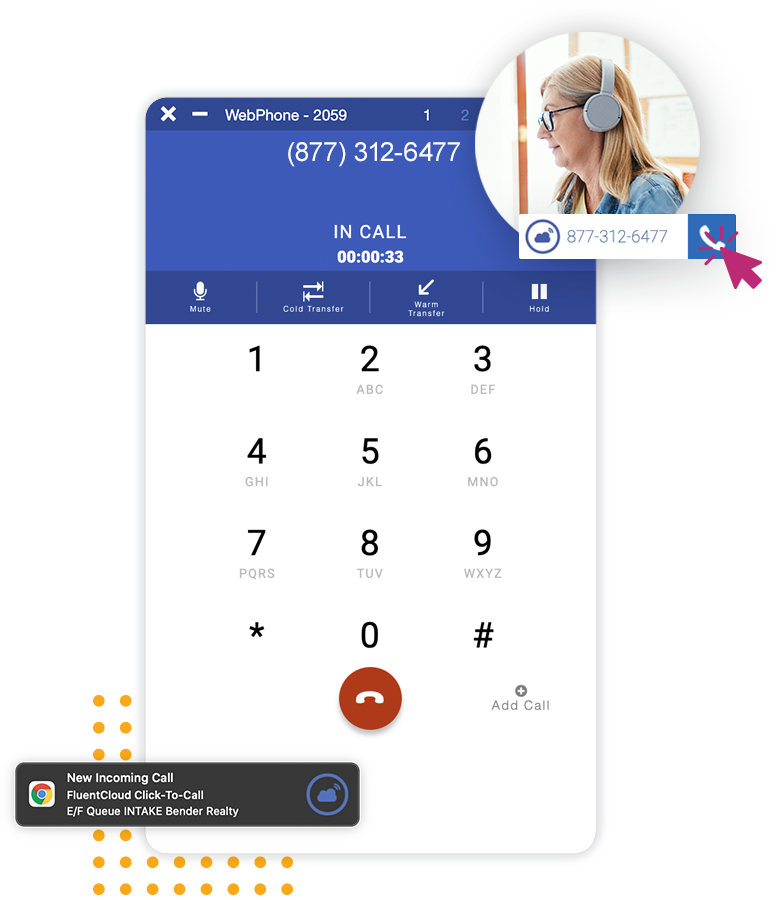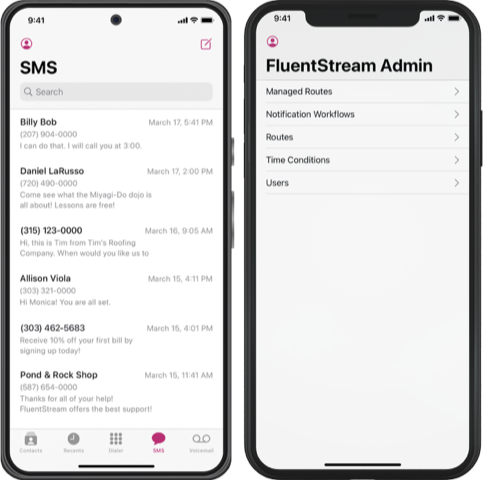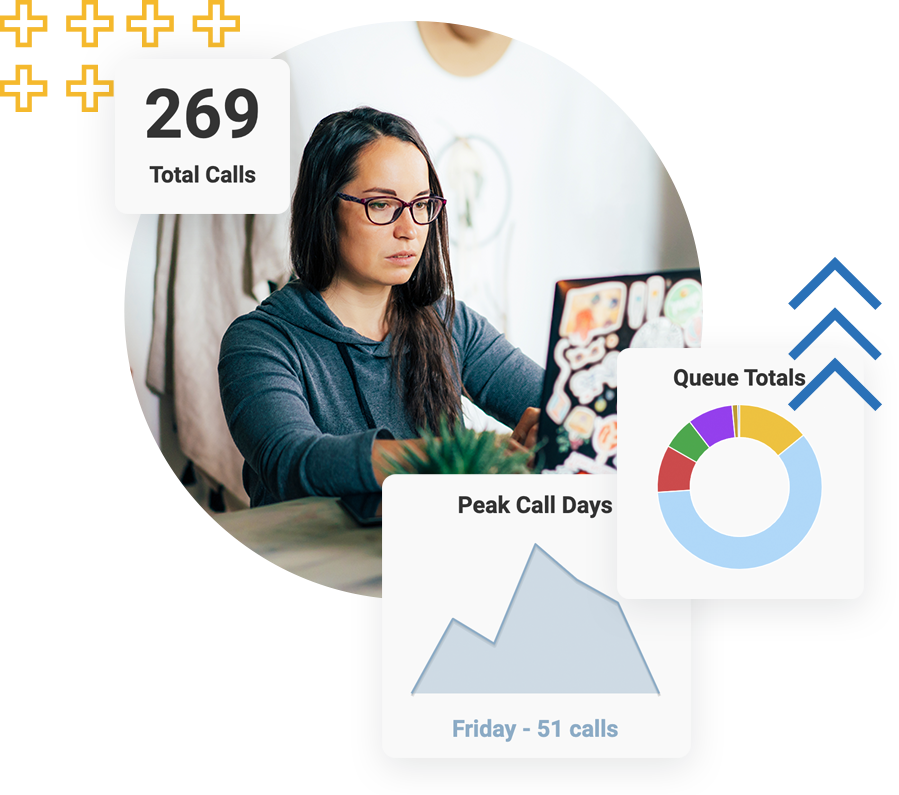
A communications platform built with small business in mind.
Cloud-hosted convenience. World-class reliability.
All customized to meet your exact needs.
Features for every small business
Calling
Unlimited Text
Messaging
SoftPhone
Call Routing
Auto Attendant

110+ features to customize your business just the way you need.
Cloud Calling
Our calling features are designed to make forwarding, transferring, and all your other communication needs simple enough for anyone.
System Administration
Easily add new extensions, update routing, and manage your business from anywhere with our intuitive web portal.
Stay Connected and In Control
Take your business anywhere and manage calls from everywhere with the FluentStream Mobile and Admin apps.
Security
Stay connected during outages and safe during emergencies with a system designed for ultimate reliability.
Analytics
Powerful reporting dashboards and tools so you can easily monitor your communications or view statistics for both teams and individuals.
Every FluentStream license also includes
110+Business Phone FeaturesEvery license comes packed with features to make running your business easier.
1GBCloud Storage1GB of cloud storage comes free with every account. For more information click here.
Integrate with tools you use everyday
Request a demo and get started today












